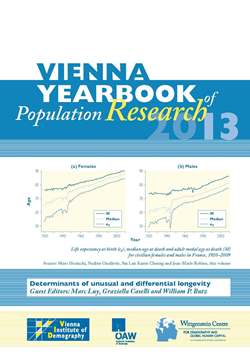
Vienna Yearbook of Population Research 2013, pp. 15-36, 2014/04/30

Studies of mortality deceleration sometimes use the order of deceleration between two groups—such as birth cohorts or subpopulations defined by race or sex—to draw conclusions about population heterogeneity. These studies often draw on the fact that between two closed groups, ceteris paribus, the higher-mortality group will decelerate at a younger age. This paper gives a first consideration to the order of deceleration between open groups. I construct a model with a one-way flow from ‘healthy’ to ‘sick’ status and, crucially, assume that a subset of the cohort has elevated risk for both sickness and death. Using simulations designed to resemble, in the aggregate, cohorts in the Human Mortality Database, I show that mortality deceleration order in such a cohort is essentially unpredictable because it depends on the interaction between a large number of parameters, some of which are unobserved in empirical data. These results suggest that it may be challenging to extend the study of mortality deceleration to include open groups whose memberships are selected for frailty or robustness, while still drawing meaningful conclusions about population heterogeneity.